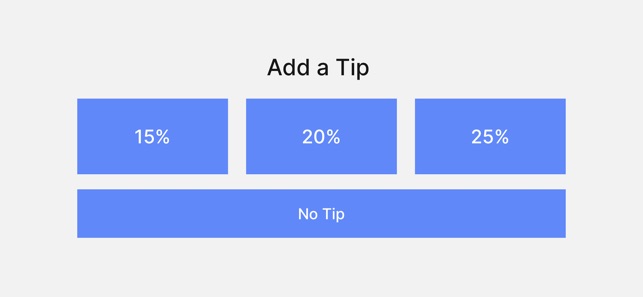Nowadays you can go to a coffee shop, a movie theater or even a doctor’s office and you will be prompted with a screen asking you to give a tip. Tipping used to be a way to show appreciation for services, but now it seems as if it’s expected everywhere.
Tipping started in Europe during the Middle Ages, and according to CNBC “the wealthy would give people in lower classes extra money for their services.” It was used as a way to show gratitude and recognition for peoples work and service. As it then moved to the United States it was asked of others to tip those in the labor force to make up for their low income.
While the years went on there was a shift in the expectations for tipping. It became normalized to see tipping in nearly every service exchange. Understandably, the most common places for tipping were in restaurants, deliveries and personal care services, since the majority of their income is made up by tips. This however changed over these past few years, as now you can see it in places such as grocery stores after using self-checkout, without the help of any employees.
Everyone knows the feeling when the infamous screen is turned to face you at a checkout counter, and the uncomfortable feeling that comes with it of whether to tip or not. This situation creates tension, and coerces consumers to tip in places where it’s not generally anticipated, and did not used to be expected. Something that many people used to be able to agree on has now become a big question in today’s society, and according to a study done by Pew Research Center “21% of U.S. adults say it’s [tipping] more of a choice, 29% say it’s [tipping] more of an obligation”.
Not only does this put pressure on consumers, but it also affects workers. Now that some work places expect their workers to get tipped, their wage could be severely impacted. According to the Indiana Community Action Association “the increased prevalence of screens prompting customers to tip, pushing more workers above the $30/month threshold for being considered a tipped worker.”
In addition, some businesses are using tipping to make up for their unfair salaries. A multitude of businesses are trying to use the screen, prompting you to tip, to cover up low wages. According to The New York Times “some businesses are using tipping to avoid offering larger pay increases. Both trends could intensify if the economy weakens. With gratuities now embedded in industries where they were once uncommon, more workers will suffer if customers start pulling back.” The instability of tipping also doesn’t give workers certainty of what they will truly be payed
Although being asked to tip at all services has become the new commonality, it also doesn’t mean that tipping should come to an absolute end. According to the Center for American Progress “setting one fair minimum wage for all workers across the nation, specifically tipped but also for disabled and temporary teenage workers, will help alleviate poverty, sustainably grow the economy, and advance gender, racial, disability, and economic justice.” Instead, companies should lower their reliability on tips when in reality, their employees might not get any.
Tipping used to be a way of rewarding workers and appreciating their service, but now it has shifted to an expectation that pressures both consumers and service workers. With now every place asking you to tip an amount, its prevalence has gotten out of hand. New approaches to tipping need to be addressed, instead of workplaces over relying on this inconsistent way of paying workers.








